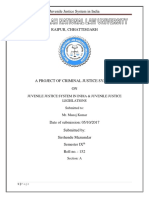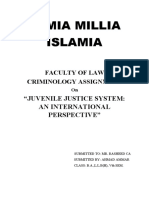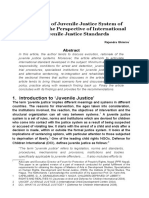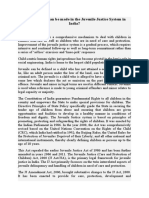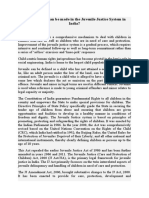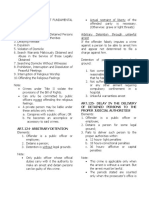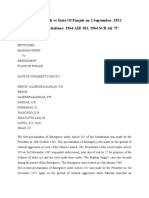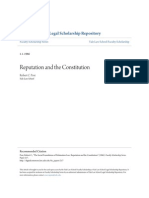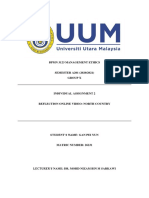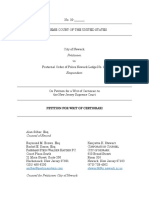0% found this document useful (0 votes)
22 views3 pagesChapter 3 Dissertation
This chapter compares the juvenile justice systems in India, the USA, and the UK, focusing on their approaches to the rights and rehabilitation of juveniles. Key differences include the minimum age of criminal responsibility, legal procedures, and philosophical approaches to juvenile justice. The analysis highlights India's mixed approach, the USA's historical punitive stance shifting towards rehabilitation, and the UK's strong emphasis on reformative and welfare-oriented practices.
Uploaded by
supriya mishraCopyright
© © All Rights Reserved
We take content rights seriously. If you suspect this is your content, claim it here.
Available Formats
Download as DOCX, PDF, TXT or read online on Scribd
0% found this document useful (0 votes)
22 views3 pagesChapter 3 Dissertation
This chapter compares the juvenile justice systems in India, the USA, and the UK, focusing on their approaches to the rights and rehabilitation of juveniles. Key differences include the minimum age of criminal responsibility, legal procedures, and philosophical approaches to juvenile justice. The analysis highlights India's mixed approach, the USA's historical punitive stance shifting towards rehabilitation, and the UK's strong emphasis on reformative and welfare-oriented practices.
Uploaded by
supriya mishraCopyright
© © All Rights Reserved
We take content rights seriously. If you suspect this is your content, claim it here.
Available Formats
Download as DOCX, PDF, TXT or read online on Scribd
/ 3

